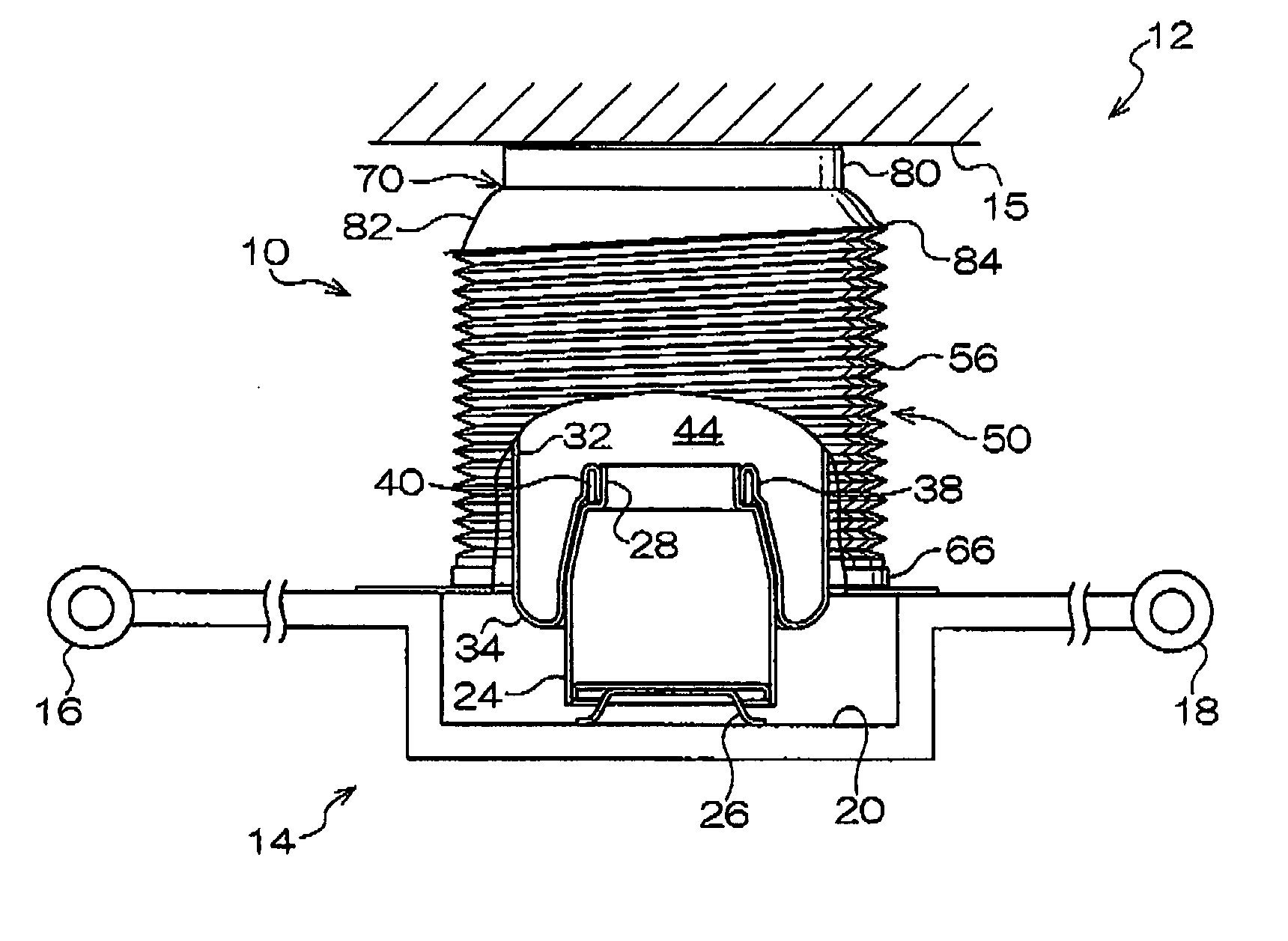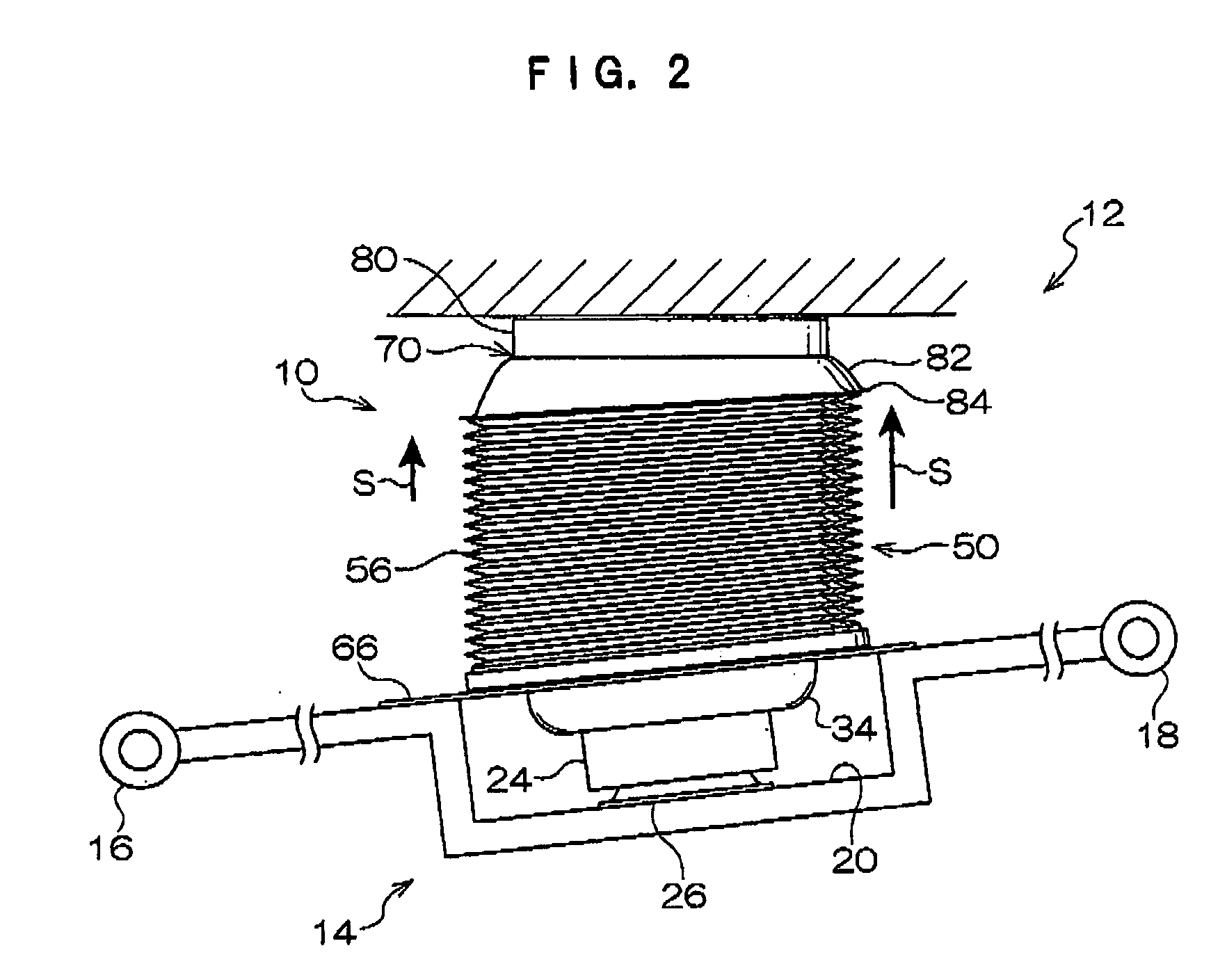Air spring
a technology of air springs and springs, which is applied in the field of air springs, can solve the problems of inability to make the rigidity of the shoulder portion sufficiently high, the shoulder portion becomes inability to withstand the restorative force and the linkage portion cannot be formed from different types of materials, so as to prevent the deterioration of the lifespan of the dust cover due to such deformation, the linkage strength of the bellows portion and the circular tube can
- Summary
- Abstract
- Description
- Claims
- Application Information
AI Technical Summary
Benefits of technology
Problems solved by technology
Method used
Image
Examples
first exemplary embodiment
[0043] A typical suspension to which the air spring according to the first embodiment of the present invention has been applied is shown in FIGS. 1-3. As shown in FIG. 1, a suspension 12 is provided with an air spring 10, whose overall form is shaped in a drum form, and a suspension arm 14 formed in a beam-like shape. Cylindrical bushing holders 16, 18 are arranged on the suspension arm 14 respectively at the base end portion and the lead end portion in the longitudinal directions.
[0044] In the suspension arm 14, the bushing holder 16 of the base end side is movably linked at the vehicle body 15 side through a rubber bushing (not shown) and the bushing holder 18 is rotatably linked to a wheel hub (not shown) through a rubber bushing. Due to this, the suspension arm 14 is movably supported by the vehicle body 15 along the up and down directions with the bushing holder 16 at the base end side as the center. Also, a concave holder 20 is formed in the upper surface portion of the suspe...
second exemplary embodiment
[0067] A dustcover in an air spring 90 according to a second embodiment of the present invention is shown in FIG. 4. With the exception of the portion involving a dustcover 92, the air spring 90 according to the second embodiment is essentially the same as the air spring 10 according to the first embodiment. Accordingly, explanations regarding the air spring 90 according to the present embodiment with regard to portions besides the dustcover 92 will be provided with the same symbol number and explanations thereon will be omitted.
[0068] A dustcover 92 formed into a substantially cylindrical shape is provided at the air spring 90 at the outer peripheral side of the diaphragm 32. The dustcover 92 is provided at the upper end portion with a hanger component 94 formed into a substantially capped shape. A linking tube 96 is formed at the upper end side of the hanger component 94 in a substantially cylindrical shape and the top surface side of the linking tube 96 has a top panel 98 that s...
PUM
 Login to View More
Login to View More Abstract
Description
Claims
Application Information
 Login to View More
Login to View More - R&D
- Intellectual Property
- Life Sciences
- Materials
- Tech Scout
- Unparalleled Data Quality
- Higher Quality Content
- 60% Fewer Hallucinations
Browse by: Latest US Patents, China's latest patents, Technical Efficacy Thesaurus, Application Domain, Technology Topic, Popular Technical Reports.
© 2025 PatSnap. All rights reserved.Legal|Privacy policy|Modern Slavery Act Transparency Statement|Sitemap|About US| Contact US: help@patsnap.com



